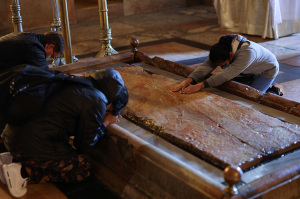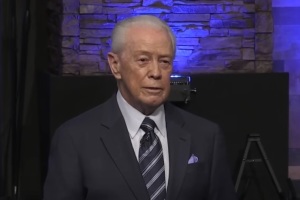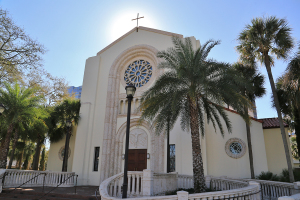Christ's Kingdom without Christ? Time to reset to 'radical' church (pt 2)

Against the backdrop of current events — especially the increasingly frenzied preoccupation with the “reset” of the global order — a sometimes puzzling statement of Jesus becomes clearer: “And from the days of John the Baptist until now the kingdom of heaven has been treated violently, and violent men take it by force.” (Matthew 11:12 NASB)
The Message paraphrase brings out an important nuance: “For a long time now people have tried to force themselves into God’s Kingdom.”
We are living through an era when people under secular banners are trying to force the coming of the benefits of Christ’s Kingdom and conformity to its high values of love, equality, respect for those unlike us, and caring for the disenfranchised and victims of discrimination.
What’s wrong with this? The answer: Without Christ and the Holy Spirit it is fleshly striving that deteriorates into judgmentalism, legalism, and terrorism.
The violence sparked by agitators, the “cancellation” of resistant people and institutions, the passion of destroyers to kill and maim in the name of their self-sanctified causes we have seen before, many times in history.
This we do not need again.
It is not revolution we need, but transformation. Revolution is force from outside-in, and transitory, requiring amies of czars to sustain it. Few phenomena reveal this as glaringly as the 18th century French Revolution, or China’s 1960s Red Guard movement.
Transformation, however, works from inward to outward. “Conversion,” an inner change of heart, is vital to the movement Christ brings to the world. It is wrought neither by sword nor czar, but by the continuing work of the Holy Spirit within the person.
For radical transformation we must have the whole of the Trinity: The heart of the Father, the mind of the Son, and the empowerment of the Holy Spirit.
Hardly anyone understood this better than Salvation Army founder William Booth, who spoke prophetically in the 19th century when he said,
The chief danger that confronts the coming century will be religion without the Holy Ghost, Christianity without Christ, forgiveness without repentance, salvation without regeneration, politics without God, heaven without hell.
There may be much disagreement about a reset to a globalist vision and policy initiatives, but General Booth described a “reset” that is urgently needed.
In Part 1 of this series on the radical church we noted that the word “radical” refers to “roots.” Thus, the reset needed now in churches everywhere is back to their New Testament roots and recovery of their true identity.
I use here the term, “churches” rather than the “The Church” to stress the importance of locality in God’s vision for His gathered people. In the Old Testament God instructs Moses in the construction of the Ark of the Covenant and calls the lid the “Mercy Seat.” “There I will meet with you,” says the Lord. (Exodus 25:22, emphasis added)
God is omnipresent but humans are limited to the strictures of time and space. Therefore, the Omnipresent One must establish a localized point spatially and temporally where He can interact with beings bound to the local. Centuries later the Lord will show Solomon how to construct and order the Temple, and tells him, “I have consecrated this house which you have built, by putting My name there forever, and My eyes and My heart will be there always.” (1 Kings 9:3 NLT)
But Nebuchadnezzar destroys the Temple in 587 BC, it is rebuilt under Herod and dedicated in 164 BC, then demolished under Roman leaders Titus and Pompey in 70 AD.
Where, then, are God’s eyes and heart focused now?
Jesus Christ is born into the world as the Focal Point for God’s engagement with His creation and the beings made in His image that He sovereignly places there. Jesus Christ is the continuation of the Temple ministry. He is the “There” where humans trapped in locality can meet and interact with the Most High God.
Jesus Himself says as much when He is chastised by religious authorities for cleansing the Temple. “Destroy this Temple, and in three days I will raise it up,” He says. “
What?” they ask in surprise. “It took us forty-six years to build this temple, and you will raise it up in three days?”
“But when Jesus said, ‘this temple’, He meant His own body,” explains John 2:21-22 (NLT and paraphrase).
Suddenly John 1:14 jumps into view: “The Word became flesh and dwelt (‘tabernacled,’ or ‘pitched His tent’) among us.” And as God’s intense holiness and glory were manifested in the Holy of Holies within the Temple, so, says John, “and we saw His glory, glory as of the only begotten of the Father, full of grace and truth.”
John had also witnessed Christ’s transfiguration, when the outer shell of His human body was temporarily dimmed so that His core disciples could see Him as He really was and is, in the full splendor of His Being.
Jesus Christ is the continuing “meeting place” between God and humans, the “locality” during His incarnation where God’s eyes and heart are continually focused.
Now Jesus’s statement to Simon Peter at Caesarea Philippi becomes clearer, when He gives to the church represented in Peter and all others who make the confession, “You are the Christ (the Messiah), the Son of the living God.” (Matthew 16:16)
The “keys” signify the authority given to Christ’s church to stand against the powers of “Hades,” or Hell. This is a transmission of the same authority that had been localized in the Jerusalem Temple, then localized in the incarnate Christ, then localized and globalized in the worldwide church.
Therefore, churches now must undergo a reset that begins with the ontological and proceeds to the functional.
More about this in Part 3 of this series.
Wallace Henley is a former pastor, White House and congressional aide, and author of more than 25 books. His newest is Two Men From Babylon: Nebuchadnezzar, Trump, and the Lord of History, published by Thomas Nelson.




























